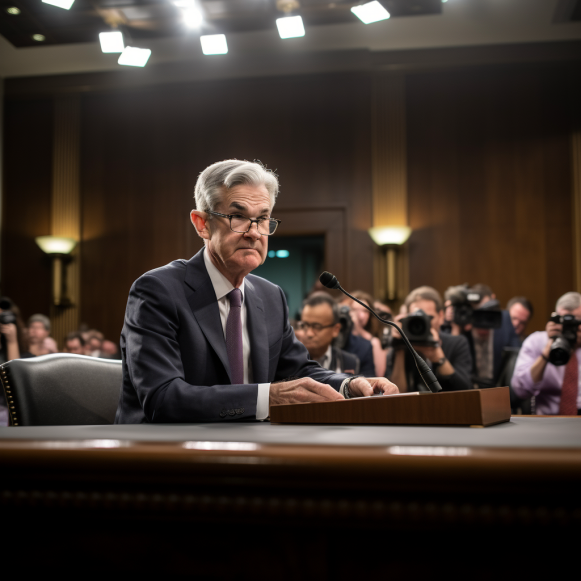A financially independent, 32-year-old options trader who started investing in high school shares 2 strategies that helped him return 25% a year on average for the past 5 years — and 52% in his best year

- Encouraged by a high school teacher, Erik Smolinski started investing in the stock market as a teen.
- He’s been actively trading since and today, at 32, is a financially independent multimillionaire.
- He shared strategies he’s used over his trading career that have helped create outsized returns.
Erik Smolinski began working odd jobs at the age of 12 ranging from splitting wood to selling Christmas trees.
“I was doing it so that I could try to create a different financial outcome going forward,” he said, having been raised by a single mother in a cash-strapped household.
Smolinski saved every penny he made. He eventually began putting his savings to work thanks to a junior ROTC instructor.
“He saw that I was working a lot and was like, ‘What are you doing with the money that you’re making?'” Smolinski recalled, who told his teacher that he was saving it. “He says, ‘Well, you should look into investing.'” It was the first time I’d heard that phrase. I’d never heard anyone mention investing in my family before. “I didn’t know what it was.”
He went to the school library, got a couple of books, and began learning about fundamental investing concepts.
He then began purchasing stocks. He specifically purchased what he was familiar with and enjoyed. For example, because he thought the iPod was “really cool,” he purchased Apple. He also recalls purchasing Netflix and Amazon stock.
“It was like one share, three shares, or five shares,” Smolinski explained. This happened in 2007, when he was still a teen. “The account was super small, less than $5,000, when I started.”
He graduated from high school in 2009 and received a full ride to college thanks to a Marine Corps scholarship, giving him even more time to trade and hone his strategy.
Smolinski, 32, is a Marine veteran who served six years on active duty between 2014 and 2019 and is now a financially independent multimillionaire thanks to his investment portfolio. He lives in San Diego with his wife Mel.
“In a broad sense, I invest,” he explained when asked what he does.
He also owns residential and commercial real estate and is interested in angel investing, but trading derivatives is his main source of income.
Since he began trading as a teen in 2007, he has only had two negative years: his first two.
“I lost about 1.1% in 2007, and then I lost 4.2% in 2008,” said Smolinski, who estimates he only trades four hours per week. “Since then, my lowest return has been 13.78% in 2018.”
Between 2018 and 2022, he returned 24.6% on average, as evidenced by screenshots of his summary statements. Over the same time period, the S&P 500 index gained nearly 12% on average. 2013 was his best year, with a 52% return. Insider also confirmed that his account balance is in the seven figures as of September 2023.
Active trading is not for everyone, and experts agree that as a long-term, wealth-building strategy, the average investor should stick with passive investing.
Smolinski concurs: “I genuinely believe that’s probably the right answer for the vast majority of people.” But as I began to realize how much better I could perform, it became a no-brainer for me.”
He discussed two strategies he’s used over the last 16 years of his trading career to generate consistent outsized returns.
1. He set a specific but attainable goal and stuck to a plan
Smolinski set a return goal for himself based on typical market returns when he became more serious about investing in college.
“I did a lot of research on what normal market returns are: What are normal returns for hedge funds?” “For mutual funds?” he inquired. “So I created this understanding of what probabilistic outcomes existed and then I created a road map for myself.”
His objective was to earn at least 15% per year. He described the figure as “achievable and replicable.”
Furthermore, if he kept saving and investing as aggressively as he was, hitting that number year after year would position him to achieve another of his goals: becoming a millionaire before the age of 30.
Having a specific goal with a plan for getting there provided him with “ultimate clarity,” he said. “So when my friends went out to bars, I went, but I didn’t drink because I didn’t want to spend the money.” It sounds ridiculous. However, guess what? That was sometimes the best decision for me. Every time I could deposit a little more money into my account, it accelerated my timeline: instead of taking X number of years, it will now take one year less. That was important to me.”
Setting a specific return goal also helps him stay focused during his hot streak.
“I value the plan over everything, so in any of these years where I exceed 15%, which honestly is most of them, I am only seeking opportunities that are just so good that I don’t want to pass them up,” he stated. “What that means is, even in my best year, I’m not trying to redline my performance.”
He’s fine with the fact that he’ll never be a triple-digit return investor. He’d rather generate consistent, slightly outsized returns while maintaining a low annual return variance, which is a risk measurement.
2 He kept meticulous trading logs and plans.
Smolinski, an active trader, believes that having both a trading plan and a trading log is essential.
“In the stock market, there are truly an infinite number of variables, the vast majority of which we cannot control,” he said. “In order to make money long-term, we need to figure out what actions make sense when, in my opinion.” It’s extremely difficult to do so if, in addition to all of the market variables, you as the trader making the decisions are another variable.”
This is where a trading plan and log come in. They are intended to control for variables and remove some of the guesswork.
Smolinski’s strategy is a 388-page Word document with over 100,000 words that is constantly evolving. It’s called “Wealth Development and Trading Plan” and is divided into sections like “strategy outlines.” This section describes all of his strategies, how he makes money, how he loses money, and what risks are involved.
He supplements his strategy with a trading log, where he collects data relevant to the individual strategies, he explained: “This is how I get to the specific details of: If I’m trading the covered strangle, which is an option strategy, I know I’m going to take path A, which includes certain qualities that I’d structure the trade with if volatility is above 20. If volatility is at 40, I might take path B.”
“It’s not a guessing game anymore,” he says, referring to the trade log, where he’s tested different scenarios and recorded the results. “It’s not like I’m thinking, ‘Oh, this might work better.'” “I know what works better based on my data,” it says, “so it gives me an objective reality to base decisions on.”
A well-organized trader will be able to identify what works and what does not.
“If I look at most traders that are struggling, it’s because they’re trying 50 different things but there’s no real organization so they can’t really track it that effectively — and markets are streaky,” Smolinski stated. “Sometimes something will work for two years and then stop working completely.” You must be prepared to pivot, which comes from having a very robust data set and effectively tracking things.”






